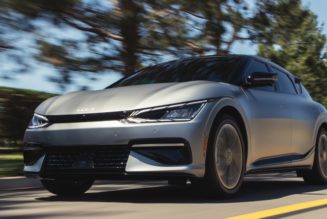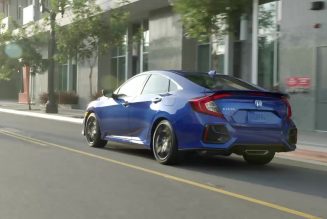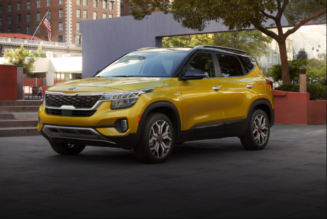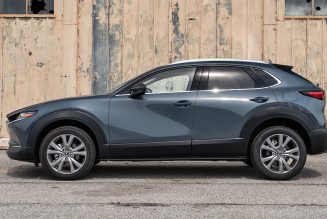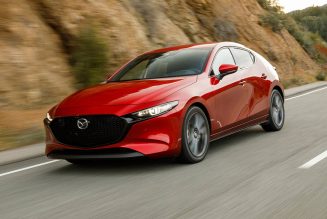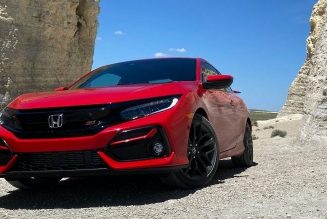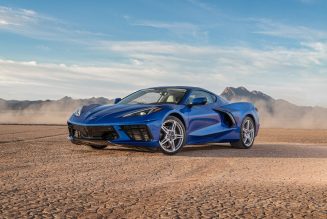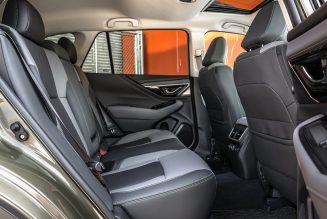If you don’t already drive a truck, you might wonder why so many people do in America today. Used to be a truck was a tool, a blunt instrument designed to do a job and nothing else. That hasn’t been true in more than a decade, and no truck proves it like my long-term 2019 Ram 1500 Laramie.
Old-school truck guys like to complain we critics put too much emphasis on how a truck rides and drives, how many cupholders it has, and how big its touchscreens are and not on how it tows and hauls. Thing is, the Ram does all those things well. That’s why we made it our 2019 Truck of the Year.
A truck may do everything right when you drive it off the showroom floor, but the proof is in how it holds up to abuse. If you’re buying a truck for any reason other than just to look cool, it’ll see a lot more wear and tear than the average car or SUV. Our truck may live in L.A. and not on a ranch, but it’s no exception to the rule. We’ve put our truck to plenty of work over the past year.
More than anything, we’ve taken advantage of its ability to haul. No fewer than four staff members used it to move houses or apartments, and several others used it to haul furniture and other bulky items. In addition to home improvement store trips, I personally filled the bed to the brim with decomposed granite and mulch for various yard and gardening projects.
Some staffers were concerned the bed space lost to the optional RamBoxes wouldn’t be a good trade, but after living with it, I’m happy with the compromise. The boxes have been endlessly useful to store straps and tie-downs day to day while carrying loose equipment and dirty shoes on camping trips and gear for photo shoots. Unlike other brands that just bolt plastic bins in the bed, the RamBoxes are integrated into the bed sides. This saves as much bed space as possible and makes the boxes accessible when you’re standing next to the truck rather than in the bed.
Less useful was the bed divider and extender that comes with the Ram Box option. I used it as a divider to keep a load of plants from falling over on the way home from the nursery, but our head of the editorial department, Ed Loh, discovered it no longer functions as a bed extender. A call to Ram revealed that function was disabled for 2019 and 2020 due to archaic taillight visibility regulations. Ram is working on a fix, but that didn’t help us any.
Of far more help was the optional drop-down step we had installed under the driver’s side of the rear bumper. It takes a stiff kick, but it drops down more than enough to make getting in and out of the bed easy, tailgate up or down.
Whether towing or hauling, the truck’s unique coil spring rear suspension had no issue keeping the loads in check and the rear end stable. Loaded or not, it provided a smoother ride than any other truck in the class without giving up any capability. The enhanced V-8 always had plenty of power, and the eight-speed auto knew the right gear and how to get into it smoothly, even if it couldn’t put itself in tow/haul mode when it detected a trailer.
All that towing and hauling didn’t do the fuel economy any favors, though. Despite the fact the truck spent far more time commuting, running errands round town, and going on road trips than it did with any serious weight in the back, the mild-hybrid V-8’s efficiency was disappointing. Trucks without electric motors and batteries, automatically deployed aerodynamic devices, and the best coefficient of drag in the class can do better than 14.6 mpg average. This specific truck can do better than its average suggests, and even slightly better than the EPA estimates, according to our RealMPG instrumented testing. This is what happens when you build to the test, not the use case.
Still, sub-average fuel economy couldn’t dent our enthusiasm for the Ram. Neither could a glitch in the giant infotainment screen and a recall, especially after both were fixed for free during the one service visit. (Another was needed just as our loan was ending, but Ram was in a hurry to get the truck back because it needs every one it can sell right now.) As such, we spent all of $41.56 maintaining our truck over the past year.
Short-lived bug aside, we loved the monster 12.0-inch infotainment system screen for its clever use of space. Like Tesla, Ram gives you the choice of a full screen or divides the display into upper and lower halves that can show separate functions. Forget changing screens every time you want to adjust the radio or climate control. Even better, it lets you use Apple CarPlay or Android Auto on one half of the screen and other functions on the other instead of switching back and forth from one software suite to another. Combined with redundant physical knobs and buttons for key features and a clever upright wireless phone charger, the Ram put more than a few more expensive cars to shame during its time with us.
While we didn’t option our truck up to the luxury car level Rams are capable of these days, we still enjoyed a quiet, comfortable interior loaded with features. Heated and cooled front seats and a heated steering wheel were appreciated at various points throughout the year, and the electric inverter and 110-volt outlet made working on the road a breeze (though a stronger inverter would be appreciated for blowing up air mattresses). The massive cab space afforded all the room we could need for people, car seats, and precious cargo throughout our adventures.
Even with some goodies left on the table, our truck still came out to an eye-popping $62,020 after nearly $15,000 worth of options. That despite the fact there are three more trim levels above Laramie on the price ladder. Modern trucks may have gotten crazy expensive, but they’ve also gotten crazy good. Our Ram may have had a hiccup or two in its life with us, but it so handily overdelivered the rest of the time it’s hard to even mention the complaints. Making it our Truck of the Year was an easy decision, and time has proven it was the right one.


